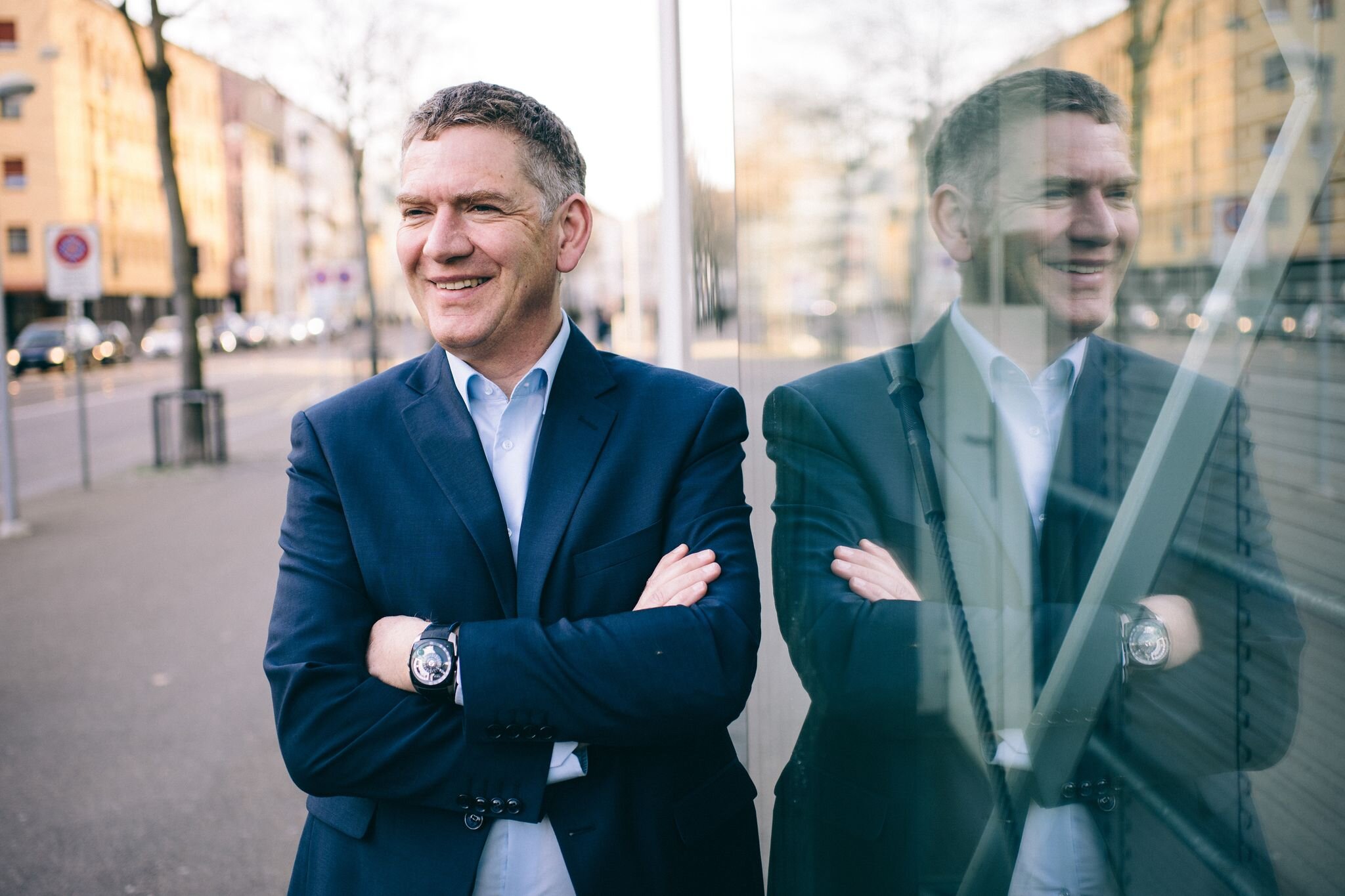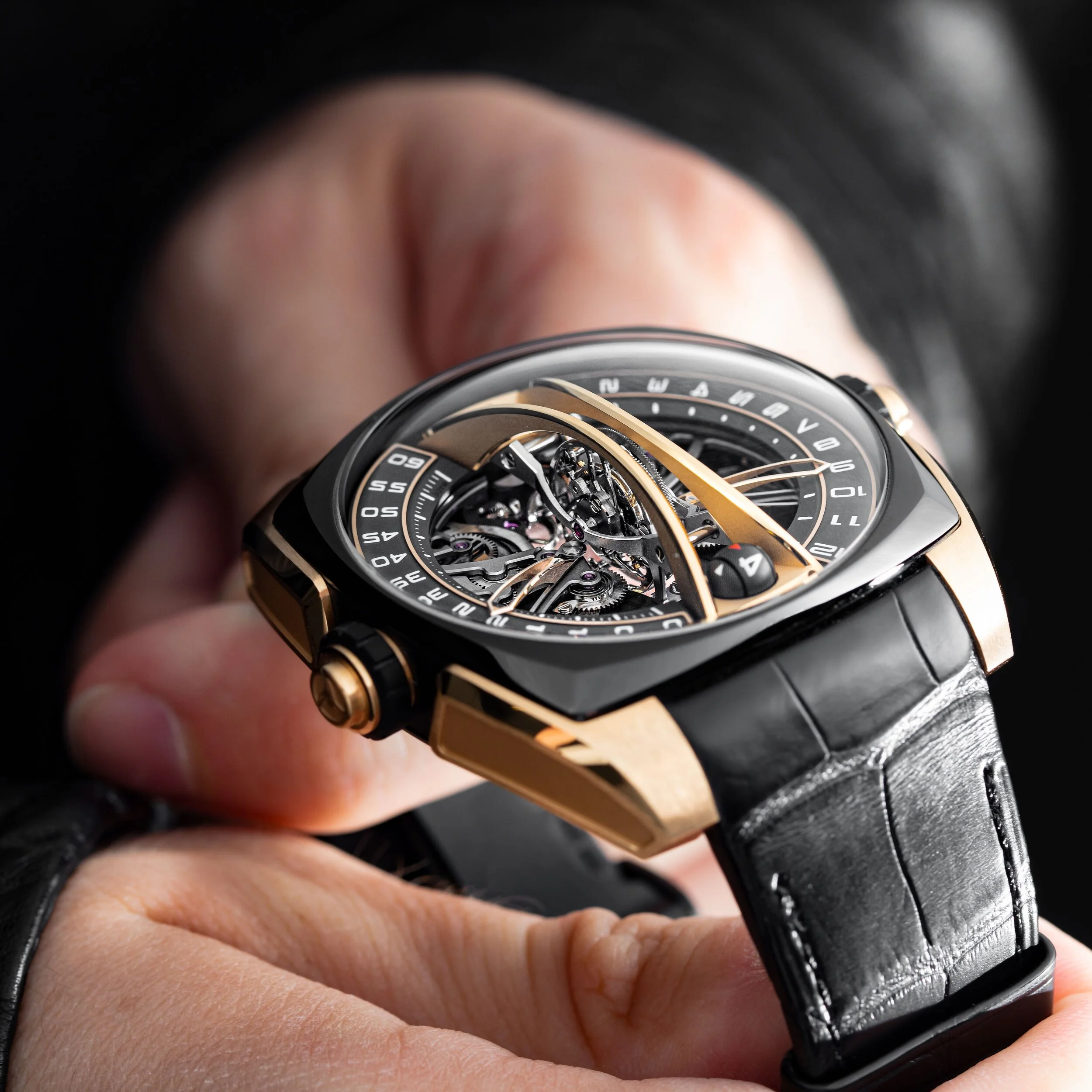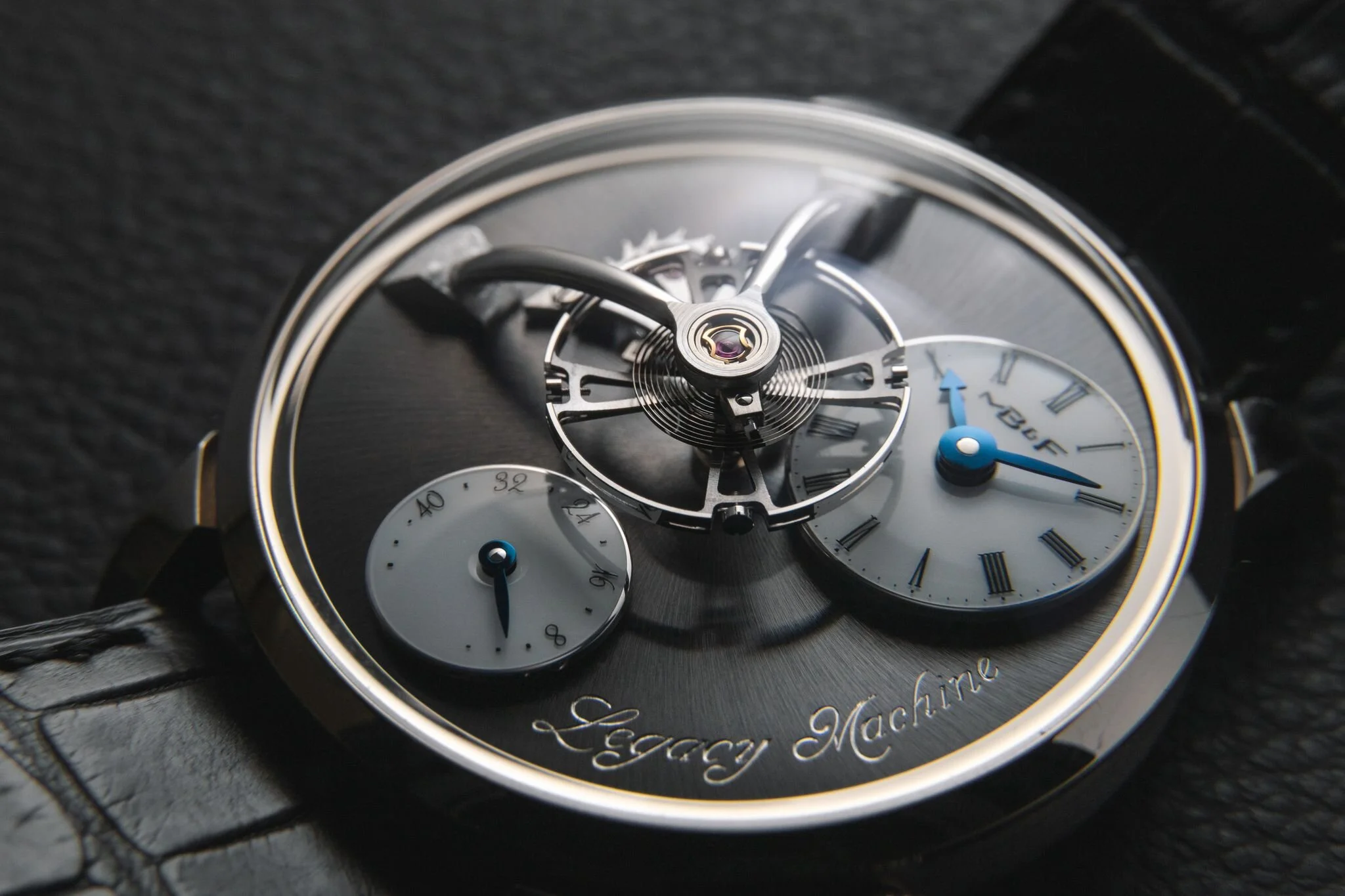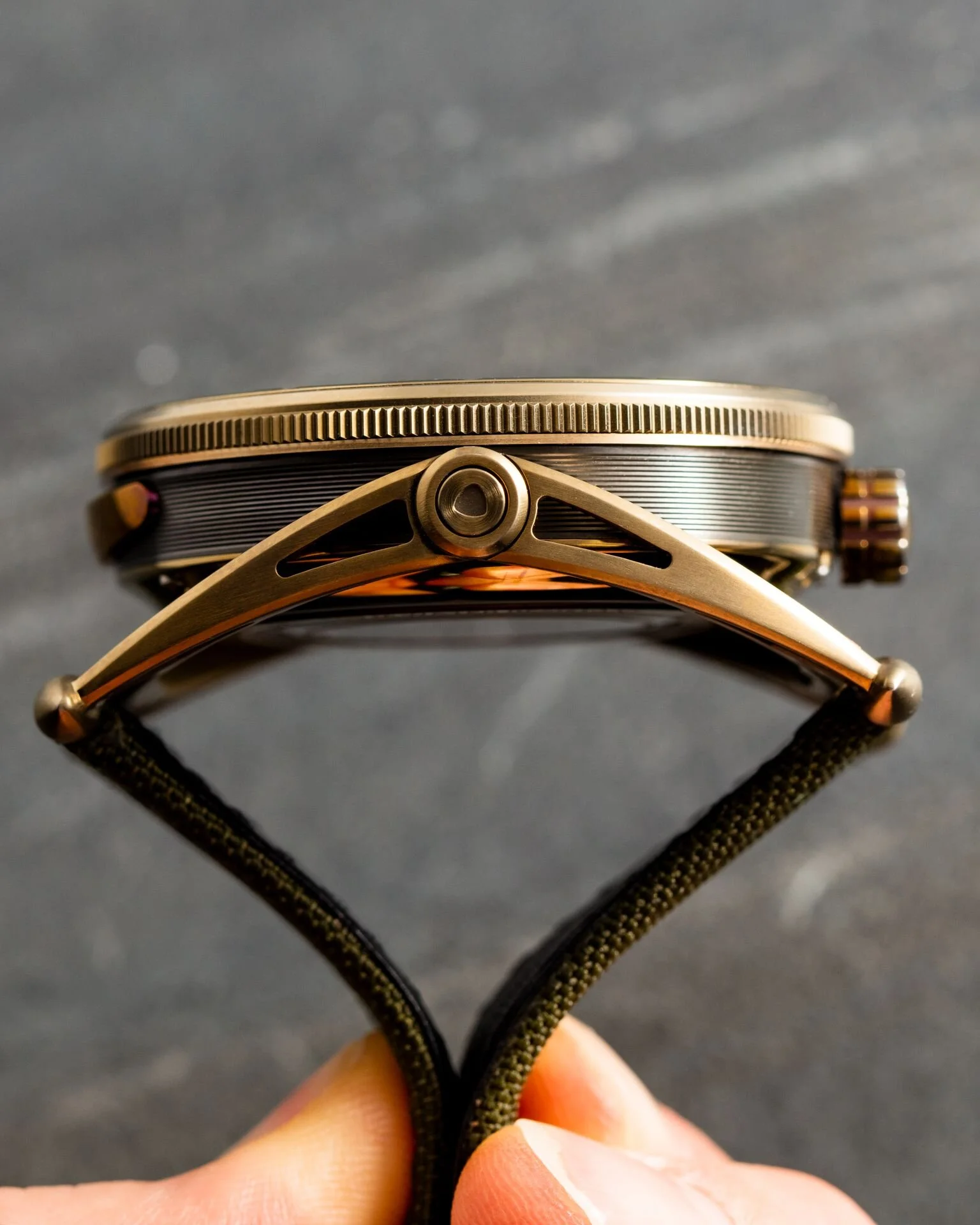Jean-Francois Mojon on Horological Innovation
Ergonomics: The New Frontier
Innovation is often understood very abstractly in watchmaking. It's loosely synonymous with "new" and "different," and generally coupled to materials, complications, and design. It's this ambiguity that made us want to dig deeper into the subject of horological innovation, to understand it better from the perspective of those who innovate.
And there's really only one way to do this: speak directly with the masters of the domain. In this case, we spoke with Jean-François Mojon, founder of the complications and innovation workshop, Chronode SA, and Technical Director of Cyrus Genève. Throughout the last 15 years with Chronode, Jean-François and his team have helped materialize some of the industry's most interesting, innovative ideas from the Harry Winston Opus X to MB&F's Legacy Machines and Cyrus' Vertical Tourbillon. Many of these timepieces, we’ve handled here at EsperLuxe and all represent the pinnacle of modern independent watchmaking.
So to grasp something more tangible about horological innovation, let’s flesh out some of its recent evolution since 2000.
The macro impacts the micro
Jean-François explained that any discussion of modern watchmaking innovation must recognize the impact of the 2008-2009 financial crisis. Though it might have been more than a decade ago, the ripples of this event still exist today. Particularly, the focus of research and development changed significantly.
As Jean-François pointed out, the financial crisis led to a shift away from completely new complication development. These large, often open-ended-budget projects were slashed quickly, leading to more financially conservative projects. Collectors and enthusiasts can probably observe this effect empirically, as the crazy and wild complications (read: Harry Winston Opus Series) really do appear to be a form of lavishness that most brands shy away from today. So where has the focus turned now?
Innovation never stops, even as economic climates and budgets change. Rather than focus on fundamental complication development, time, money and attention poured into more creative displays of time, based on the foundation of existing, tried-and-true complications.
Taking a step back, it's easy to construe this macro-economic impact on horological innovation as negative. "Oh, watches are no longer as innovative as before, R&D budgets are no longer as large as before," we can almost hear nostalgic collectors and enthusiasts lament. The truth is, the innovator himself, Jean-François, was very pragmatic about these shifts over time.
He remarked that innovation always requires constraints, as they help define the playing field. Whether it’s through design, materials, or budgetary constraints, all provide some structure to an otherwise limitless, chaotic process. Writers and painters can empathize with these sentiments, as they know how terrifying a blank page or canvas is.
As far as the turn to the display of time is concerned, Jean-Francois mentioned that there is nothing more important to the visual experience of a timepiece. After all, it is the face of the watch that draws collectors in throughout daily wear.
The Cyrus Klepcys Vertical Skeleton Tourbillon.
Changes to the process
Just as the macro-economics shifted the focus of horological innovation so too has the process of innovating evolved. It’s important to distinguish there though, as Jean-François does, this has more to do with technological advancements than anything else. Now for many of us, innovation (creativity) is not often associated with process - this feels comparable to the idea of taming a lion. But process is a fundamental aspect of all horological innovation, and each brand takes their own approach. Yet even with the particularities of each brand's innovation "style," some things have impacted everyone's process equally. Namely, who’s involved.
Twenty to thirty years ago, innovation was much more broadly driven by individuals. Specifically, there really wasn’t a strong understanding of interdisciplinary teamwork. Yet as the interfaces between movements, cases, and dials became more complex, it has a mirrored effect on how complex, interdisciplinary collaboration has become. Casemakers, watch designers, watchmakers, dial manufacturers, speciality material suppliers (for example, sapphire or carbon), all talk to each other through the process of prototyping new horological innovations. In today’s world, the cutting edge of horology is rarely led by the archetypal, reclusive watchmaker. It’s now much more a team affair, exemplified maybe no better than the long list of Max Büsser’s interdisciplinary friends supporting the creative process behind MB&F.
The MB&F LM101: The entire Legacy Machine line is supposed to represent the fusion of the best aspects of traditional watchmaking with an avant-garde twist.
The next frontier
So we know how innovation has shifted, in terms of its focus and its process. But where is this evolution headed? What awaits us in the future of horological innovation? Jean-François sees the next frontier of watch design and development in ergonomics. This isn’t exclusively about how watches fit our wrists, it’s also how certain aspects of the watch can be tuned to provide collectors with more acoustic or tactile pleasure (think the sound of winding the watch or the temperature of the watch when picked up).
For us, ergonomics is an extremely exciting answer. Even though most of the watch community thinks of innovation as something to admire inside the watch, often solely for aesthetic purposes, there’s an argument that the most beloved innovations in modern independent watchmaking are ergonomic in nature. For example, De Bethune’s patented floating lug system on the brand’s DB28. This brilliant ergonomic innovation is exceptionally well liked by the watch community, specifically because it’s so comfortable on the wrist. Attention to form-fitting, adjustable lugs is a small detail that played a large part in elevating the DB28 to the place of a modern icon.
De Bethune’s DB28 GS Yellow Submarine displaying the floating lug system.
Our sense is, there are many more opportunities for ergonomic details to seal the fate of many more future hits in the watch industry. And this isn’t limited exclusively to the wearability of timepieces, nor tactile experience with the watch.
Jean-François mentioned the future of ergonomic innovation in watchmaking will also focus on the acoustic. This means placing more attention on the sound a given watch makes while being wound. For many horology enthusiasts, the act of winding a watch is about as intimate an experience as exists between collector and timepiece. And in that moment, there’s nothing better than crisp, loud acoustic feedback from winding.
Let there be no doubt, watchmakers will continue to innovate mechanically, experimenting with higher and lower frequencies, larger and smaller balance wheels, new types of regulators. Combined with a heightened focus on ergonomics, the future is fit for a lot of exciting new timepieces. Mostly, it’s important to remember that watchmaking is a game of millimetres. It’s the little things that matter most.




